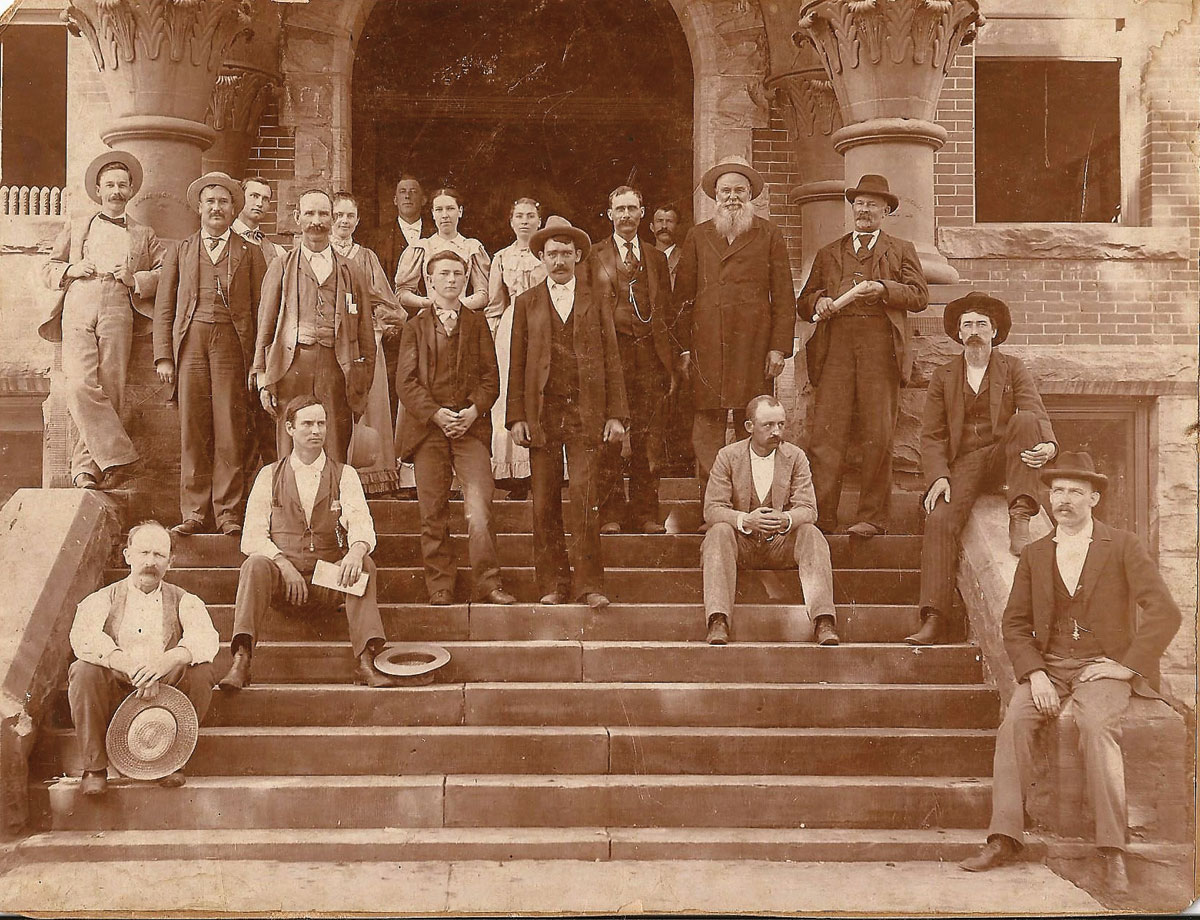
The Barton County, Mo., Courthouse is the center for the community
The barton County, Mo., Courthouse has bragging rights for which no other in the state, or even the nation can compete.
Harry S. Truman was born in Lamar, Mo., and he chose to accept the Democratic Party’s nomination for vice president from a platform on the west side of the courthouse. On Aug. 31, 1944, the largest crowd ever, some 10,000 people, came to watch the event.
The present courthouse in Lamar, Mo., is the fourth for Barton County.
It’s believed the first building was built on property given to the county by Elisha Peters and financed by George Ward in 1858. Ward was a leader in establishing the pioneer village of Lamar, naming it after his school friend, Mirabeau Lamar, a military hero in Texas. The large square was believed to have been have been chosen from Ward’s earlier experiences on the frontiers of Spanish settlements. According to historical accounts, the planned city was laid out by Allen Petty. The courthouse was located near the center of the north side of the square. The native lumber was sawed at the Ward Mill and hauled to the building site by Edward G. Ward, George Oldham and others. It was made of lumber and measured 30-feet by 60-feed. The first religious services in the county was held there when a sermon was read by a layman, there being no minister in the place.
The original structure was replaced in 1860 by a two-story brick structure located in the center of the square. There were four rooms below with court rooms above. In 1863, most of the buildings on the square, including the courthouse, were burned by unidentified Civil War raiders. At that time, the courthouse records disappeared under circumstances which remain a matter of dispute. The most reliable report seems to be that Bill Wells, Bill Duke and John Goss, Confederate sympathizers, who lived southeast of Milford, a village in Barton County, removed the records and took them to the home of Wells’ father and buried them under a smoke house. After the war, Wells went to Arkansas where he located Edward G. Ward and told him the location of the records. The records, except Book A, were recovered.
County officials called for a temporary courthouse to be built on the west side of the square in 1866. Cost was approximately $5,000. The court received the completed building Aug. 9, 1866.
An election in 1882 gave voters the option for a new courthouse, but it was not until November 1887 that a proposal passed. The 80-foot by 120-foot building was constructed of pressed brick and Barton County sand stone. Arches for the four entrances were made by the Lamar Iron Works. The architect varied the window grouping and canopy design on adjacent sides of the building.
The architectural design originally called for a tower with a four-sided clock and a cupola. The tower and cupola were built, but no clocks were ever installed. Eventually, the tower and cupolas and one of the spiral iron stairs were removed so the building can never be placed on the National Register of Historic Buildings.
The courthouse fully renovated in 1973. An elevator was installed in 1987, making the building up to be handicapped accessible and ready to serve the people of the community for many years to come.
Sitting on the Barton County Courthouse lawn is something else that is not on every courthouse lawn.
A Statue of Liberty was placed there and dedicated by the Barton County school children and the community-minded people who underwrote the project on Feb. 28, 1950. It has a height of 16 feet, 10 inches with a plaque which reads: With faith in and loyalty to the United States of America, the school children of Barton County have caused to be erected this replica of the “Statue of Liberty” symbolizing freedom and justice for all.
Also, on the courthouse lawn, is a bandstand. The cornerstone says “Band 1913.” The bandstand may not have any significant historical reference, but for anyone who lived here during the 1920s, 30s, and 40s, there are lots of memories.
Everyone came to town on Saturday night and listened to the band. The stores around the square were open as long as the crowd stayed, which was usually midnight or so.
In that gentler time before television and air-conditioners, cherry Cokes, limeades, and cherry phosphates were 5 cents at Harmons Drug Store. A dime would buy you a hamburger or milk shake, and if you were under 12 years, you could go to A.J. Simmons’ Plaza Theater for the same price – and the courthouse was the center of it all.







